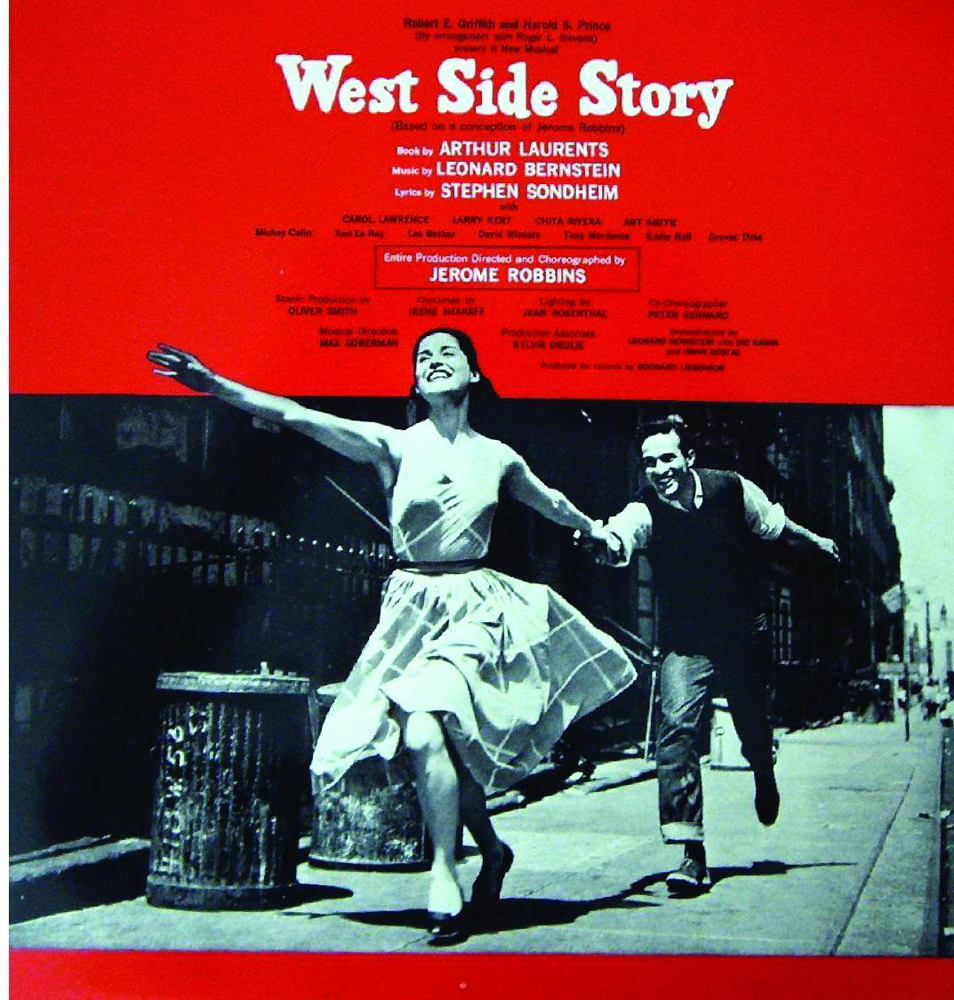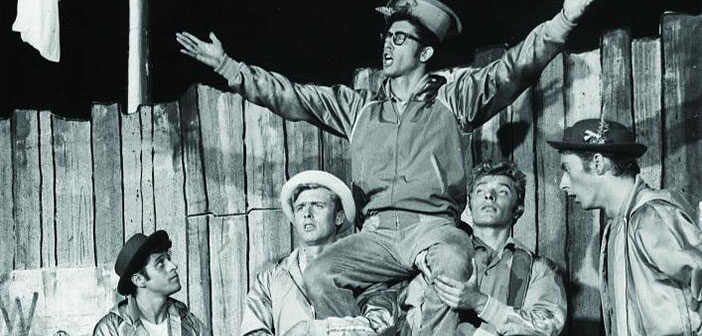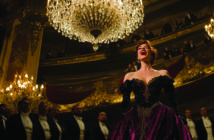
This page is also available in / Cette page est également disponible en:
![]() Francais (French)
Francais (French)
Of all Leonard Bernstein’s compositions—from Candide to Mass to On The Town—West Side Story looms large above the rest. The original 1957 Broadway production ran for 732 performances and garnered six Tony Award nominations. The show has since been revived on Broadway three times, adapted to film twice, and performed in every corner of the globe.
West Side Story is a reimagining of Shakespeare’s Romeo and Juliet, set on Manhattan’s Upper West Side in the mid-1950s. Rather than coming from “two houses, both alike in dignity,” its star-crossed lovers come from warring Puerto Rican and white street gangs. West Side Story’s creators chose this cultural update because of its relevance to mid-century life in New York City, and the musical possibility it afforded.
It was a budding young composer named Stephen Sondheim who was tasked with penning the lyrics for the show. He was initially resistant to the project, as he hoped to concentrate on pursuits that allowed him to write his own music alongside his lyrics. Sondheim was convinced, however, by musical theatre veteran Oscar Hammerstein that West Side Story would be a valuable learning experience. One can imagine that he was eventually grateful to have heeded Hammerstein’s advice: Sondheim, of course, became one of the towering giants of musical theatre.
 In many ways, Bernstein’s approach to West Side Story paved the way for Sondheim and other composers by overhauling the then-contemporary conception of what a musical could be. Bernstein’s score incorporated jazz, Latin beats, full symphonic sounds, operatic vocal lines, and musical theatre conventions in a “lyric theatre” blend never before heard on the Broadway stage.
In many ways, Bernstein’s approach to West Side Story paved the way for Sondheim and other composers by overhauling the then-contemporary conception of what a musical could be. Bernstein’s score incorporated jazz, Latin beats, full symphonic sounds, operatic vocal lines, and musical theatre conventions in a “lyric theatre” blend never before heard on the Broadway stage.
Representative of the general reception, one critic from the New York Daily News wrote, of the show’s opening night, that it was “a bold new kind of musical theatre—a juke-box Manhattan opera. It is, to me, extraordinarily exciting.” The enduring legacy of West Side Story’s fearless genre-mixing, as well as the way it tackled tragedy head-on is clearly reflected in more recent musical theatre hits such as Lin-Manuel Miranda’s In The Heights and Duncan Sheik’s Spring Awakening.
The music of West Side Story endures in its own right. Classic songs like “Maria” and “Somewhere” feature as frequently in the recital programs of classical singers like Andrea Bocelli and Nadine Sierra as in the recordings of popular singers like Aretha Franklin and Barbra Streisand. The Symphonic Dances from West Side Story, an orchestral suite consisting of excerpts from the show, are popular fare for orchestras around the world.
Bernstein supposedly regretted that his more “serious” compositions never received the recognition earned by this more popular work. Nevertheless, West Side Story’s timeless melodies, bold innovations, and universal themes of immigration, cultural clash, and forbidden love have firmly secured Bernstein’s legacy—not only as a great conductor and educator of the 20th century, but as an iconic composer, too.
Playlist
This page is also available in / Cette page est également disponible en:
![]() Francais (French)
Francais (French)














